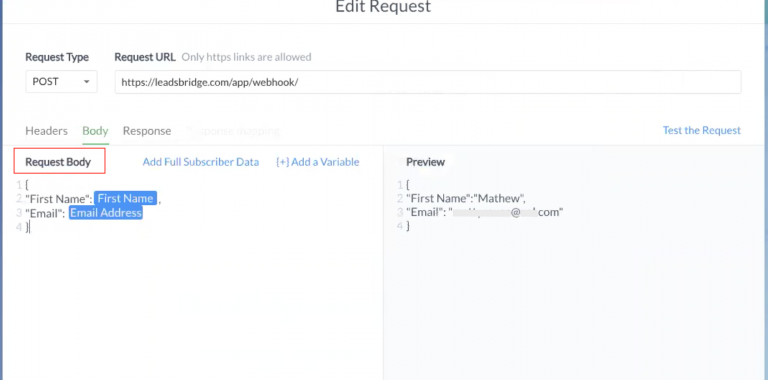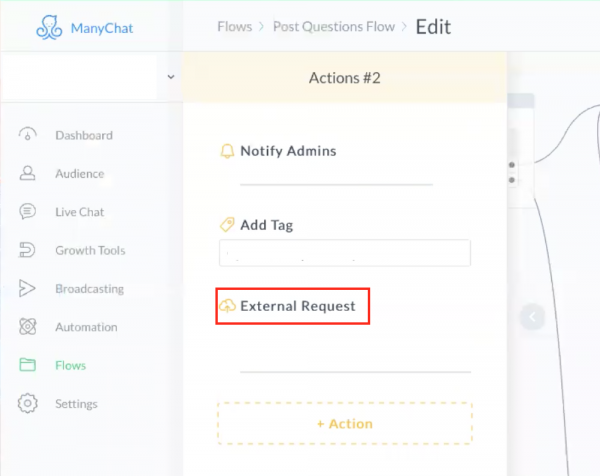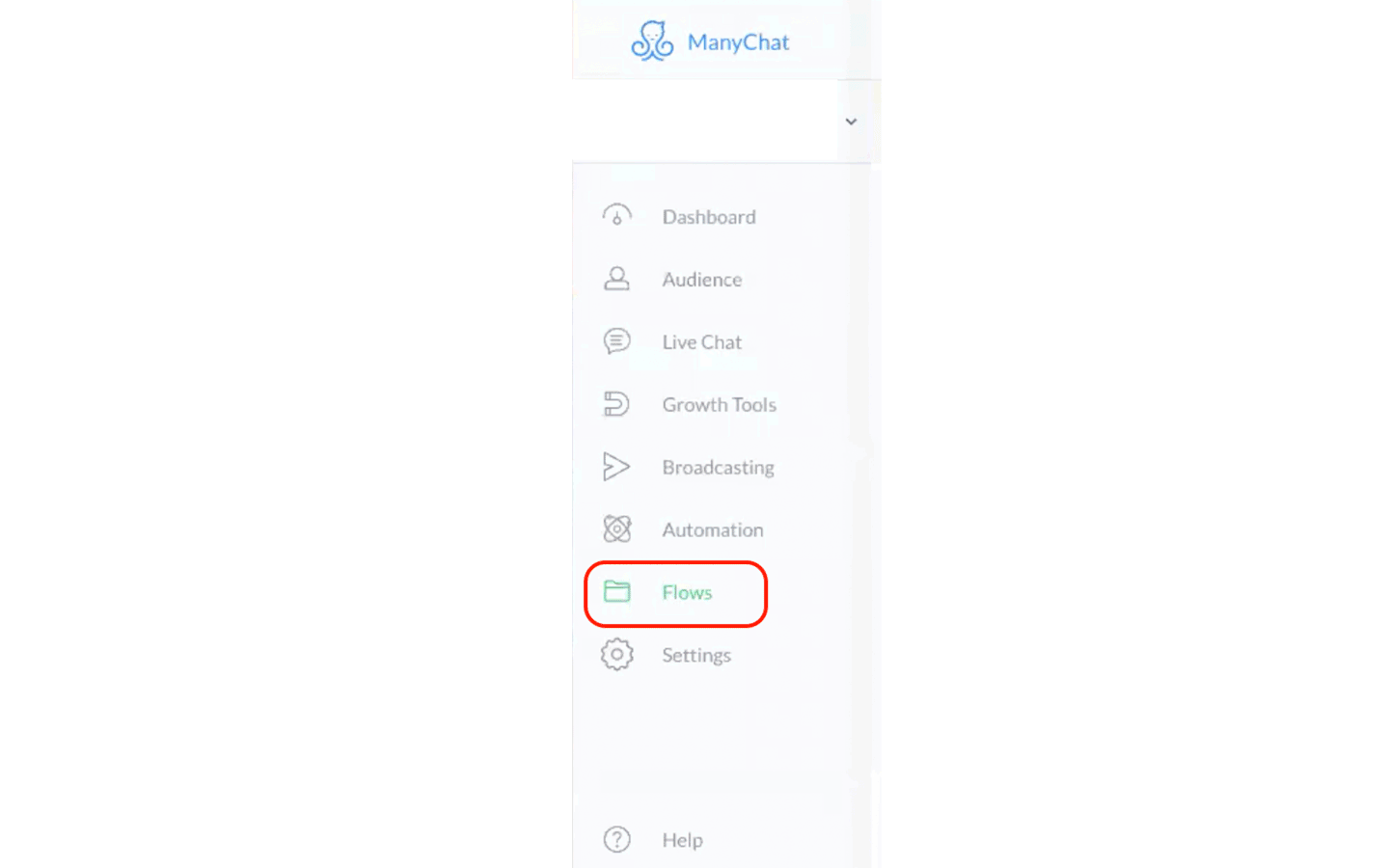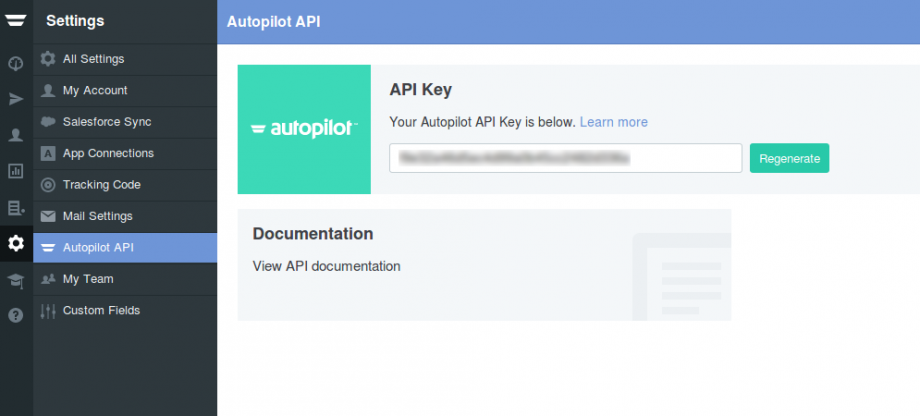Connect ManyChat to AutopilotHQ with LeadsBridge


In this article, you'll learn how to set up the bridge and connect ManyChat to My CRM Example using LeadsBridge.
How to set up your bridge step-by-step tutorial
Before you start
- Head over to the left sidebar and click on the Create new Bridge green button
- You'll be taken to the first step of the bridge creation
Step 1: Choose the apps you want to connect
- Choose ManyChat as the source for your bridge
- Choose AutopilotHQ as the destination for your bridge
- Click on the Continue button
- At this point you can choose a name for your bridge (this will only be visible inside LeadsBridge and you can also edit it later)
Step 2: Configure your ManyChat with AutopilotHQ
Step 2.A: Setup your ManyChat integration
- Click on Connect ManyChat
- Click on Create new integration to connect your ManyChat (or select an existing one from the dropdown if you already connected it)
- A popup wil be opened where you can authorize the ManyChat integration
- Fill URL, Access Secret field to connect ManyChat with LeadsBridge
- Click on the Authorize button
- You can choose a name for this ManyChat and LeadsBridge integration (you can also edit it later)
- Once done, click on Continue button and you will get back to the bridge experience where you could choose additional integration settings
- Now that your ManyChat is connected, you can continue with the set-up of your bridge


Step 2.B: Configuration details for ManyChat
How to get URL, Access Secret
1. Go on your ManyChat account and click on "Flows".
2. Create a "New Flow" or "Edit" an existing one.
3. Once done, click on "Go to Flow Builder" and select "Perform Actions".
4. Add the "External Request" by clicking on "+ Action".
5. Click on "External Request" option to open the "Edit Request" page.
6. On the "Edit Request" page, paste the Webhook URL provided by LeadsBridge in the "Request URL" field.
7. On the "Request Body" section, click on "Add Full Subscriber Data" to add all user's fields. ( Learn more)
2. Create a "New Flow" or "Edit" an existing one.
3. Once done, click on "Go to Flow Builder" and select "Perform Actions".
4. Add the "External Request" by clicking on "+ Action".
5. Click on "External Request" option to open the "Edit Request" page.
6. On the "Edit Request" page, paste the Webhook URL provided by LeadsBridge in the "Request URL" field.
7. On the "Request Body" section, click on "Add Full Subscriber Data" to add all user's fields. ( Learn more)


Other Info
Required: to use ManyChat as a source please confirm that you have the External Request (PRO feature) available in your ManyChat Flows.


8. Click on "Test the Request" to send a test lead to LeadsBridge.
9. On LeadsBridge side: stay on the Source step (2° step) of the bridge while sending this test, this way LeadsBridge will be able to recognize the fields and let you do the matching with your destination integration.
See the GIF below that illustrate the process.
9. On LeadsBridge side: stay on the Source step (2° step) of the bridge while sending this test, this way LeadsBridge will be able to recognize the fields and let you do the matching with your destination integration.
See the GIF below that illustrate the process.


Step 2.C: Setup your AutopilotHQ integration
- Click on Connect AutopilotHQ
- Click on Create new integration to connect your AutopilotHQ (or select an existing one from the dropdown if you already connected it)
- A popup wil be opened where you can authorize the AutopilotHQ integration
- Fill API Key field to connect AutopilotHQ with LeadsBridge
- Click on the Authorize button
- You can choose a name for this AutopilotHQ and LeadsBridge integration (you can also edit it later)
- Once done, click on Continue button and you will get back to the bridge experience where you could choose additional integration settings
- Now that your AutopilotHQ is connected, you can continue with the set-up of your bridge


Step 2.D: Configuration details for AutopilotHQ
Other Info
First of all, you should login to your AutopilotHQ account and then click here (https://login.autopilothq.com/login?redirect=%2Fselect#settings/api)


Step 2.E: Email Receipt (Optional)
You may choose to receive an email receipt for each incoming lead.


- Type the address(es) where you'd like to receive the receipt
- You may also modify the Subject line of the email
Step 3: Fields Mapping
Here you'll be able to map your ManyChat information with your AutopilotHQ fields.
- You will have AutopilotHQ fields on the left. Match the information you wish to pass align from ManyChat
- Based on AutopilotHQ functionality, some fields might be required; if this is the case, you can identify those fields with a * (star), so be sure to map all them
- You can also use the functions to customize information like reformatting dates and times or modifying text, phone numbers and so on.
- You may leave blank the box of a field's information you don't want to send through. Clicking on the Show unmapped fields button you will have visibility on all the available fields still not mapped


Step 3.A: Leads Filter (Optional)
If you'd like you could add a filter for incoming leads. This filter will sync only leads that meet the configured conditions
- Click on the link Add Filter for Incoming Leads on the top left
- A popup wil be opened where you can configure the filter
- You can define a series of condition to filter the leads. The lead will be synced only when all the conditions will be met
- Once finished, click the Save Changes button to switch back to the Fields Mapping to continue with the bridge configuration


Step 4: Save and Publish
- Click on the Save and publish button
Congratulations! Now your bridge is up and running
Do you need help?
Here some additional resources:
- ManyChat documentation page and common questions
- AutopilotHQ documentation page and common questions
- LeadsBridge KNOWLEDGE BASE
- Contact support from your account clicking on the top right Support button



